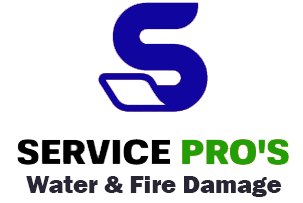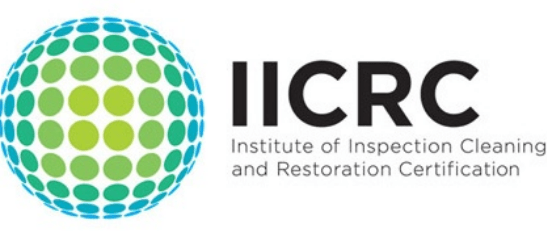Isn’t it fascinating how we often take for granted the intricate network of pipes running underneath our feet, until something goes wrong? We’re about to explore the complex world of sewer backups, the unfortunate circumstances that can lead to them, the unexpected consequences they bring, and most importantly, the ways we can prevent them from wreaking havoc on our lives. The matter might appear murky at first, but rest assured, as we navigate this labyrinth, we’ll shed light on the dark recesses of this usually overlooked aspect of our urban infrastructure. So, if you’ve ever wondered about what really happens when things go awry beneath our streets and homes, stay with us. You might be surprised by what you’ll discover.
Unraveling the Causes of Sewer Backups
Often, we find that sewer backups are triggered by a variety of factors including blockages, severe weather conditions, and crumbling infrastructure.
Blockages are typically caused by misuse of our sewer systems. We’re guilty of flushing items down the toilet that aren’t meant to go there. Nappies, sanitary products, and even ‘flushable’ wipes don’t break down the way toilet paper does. They build up, causing a blockage that stops the water flowing correctly.
Our sewer systems aren’t designed to cope with extreme weather conditions, either. Heavy rainfall can overwhelm the sewer system, leading to backups. This is particularly an issue in urban areas where there’s less green space to absorb the water, and more concrete and asphalt that cause runoff.
Crumbling infrastructure is another major cause of sewer backups. Many of our sewer systems are aging, some even dating back to the Victorian era. The pipes have deteriorated over time, leading to cracks, collapses, and leaks. This can cause anything from minor backups to major sewer collapses.
It’s clear that there’s no single cause of sewer backups. It’s a complex issue with a number of contributing factors. But understanding these causes is the first step in preventing future backups.
We all have a role to play in keeping our sewer systems functioning properly. By being mindful of what we flush, preparing for extreme weather, and advocating for infrastructure improvements, we can help reduce the risk of sewer backups. After all, a functioning sewer system is essential for the health and wellbeing of our communities.
Typical Signs of a Sewer Backup
While it’s important to understand the causes of sewer backups, it’s equally critical to recognize the signs that one might be imminent. We’ll now go over some of the most common indicators of sewer backup.
One of the first signs you may notice is an unusual gurgling sound coming from your drains or toilets. This could be a warning that water is having trouble flowing freely down your pipes. If you’re hearing this sound, it’s time to investigate further.
Another typical sign is a foul smell coming from your drains, toilets, or even your yard. If your sewer is backed up, waste can’t move away from your property as it should, resulting in this unpleasant odor. Don’t ignore it, as it’s a clear sign something’s amiss.
Slow draining is another common indicator. If water is taking longer than usual to drain from your sinks, showers, or toilets, a sewer backup could well be the cause.
Sometimes, you might even see raw sewage backing up into your toilets or tubs. This is a surefire sign of a severe problem, and immediate action is necessary.
Lastly, unexpected changes in your lawn, like soggy patches or unexplained greening, can indicate a leak in your sewer line.
Unforeseen Consequences of Sewer Backups
In the unfortunate event of a sewer backup, we’re confronted with a host of unexpected and unpleasant consequences. Beyond the visible mess and stench, there are several unseen repercussions that may take us by surprise.
One of the hidden impacts is the potential for property and infrastructure damage. Sewer backups can cause significant damage to our homes and properties, including structural damage to the building’s foundation, and this is often not immediately noticeable. The cost of repairing such damage can be significant, and often, our insurance policies don’t cover it.
Then, there’s the threat to our health. Sewer backups can lead to the spread of harmful pathogens and bacteria, causing serious health risks. We’re talking about diseases like Hepatitis A, Giardia, and Salmonella, among others.
On top of this, sewer backups can have a significant impact on our mental health. The stress and anxiety of dealing with a sewer backup, not to mention the potential loss of cherished personal items, can lead to emotional distress.
Analyzing the Financial Impact
Beyond the physical and mental toll, there’s a hefty financial burden that we need to consider when dealing with sewer backups. These unexpected costs can be quite overwhelming, especially if you’re not prepared for them. From cleaning and repair charges to potential property devaluation, the financial impact is wide-ranging and severe.
Firstly, let’s consider the immediate costs. These include professional cleaning and sanitation services, which are necessary to ensure the safety of your living environment. These services aren’t cheap, often running into thousands of dollars. Then, there’s the cost of repairing the actual source of the backup. Whether it’s a blocked pipe, a broken sewer line, or an overwhelmed city sewer system, the repair or replacement costs can be substantial.
Next, we can’t overlook the potential property damage. When a sewer backs up, it can flood basements, ruin flooring, and damage personal belongings. These damages often require extensive repairs or replacements, adding to the financial burden.
Effective Prevention Strategies for Sewer Backups
Now that we’ve understood the potential fallout of a sewer backup, let’s dive into some effective strategies to prevent these messy situations from happening in the first place.
Firstly, it’s crucial to maintain our sewer systems regularly. This includes cleaning and inspecting pipes to ensure they’re free from blockages. If we notice any issues, it’s important to address them immediately to prevent backups.
Avoid flushing inappropriate items down the toilet. Diapers, wipes, and other non-degradable items can cause severe blockages. Remember, toilets aren’t trash cans!
Install backwater prevention valves. These devices allow wastewater to flow out of our homes, but not back in. So, if a backup does occur, our homes are protected.
Next, let’s consider tree root management. Roots can infiltrate sewer lines, causing significant damage and backups. Regular inspections can help detect these issues early.
It’s important to educate ourselves and our communities about the consequences of sewer backups. Knowledge is power and can be a key factor in prevention.
Frequently Asked Questions
What Are the Health Risks Associated With Sewer Backups?
We’re discussing the health risks linked to sewer backups. They’re serious and can cause diseases like Hepatitis, Gastroenteritis. Additionally, they can lead to allergy issues and skin infections. It’s crucial to prevent sewer backups.
How Often Should I Schedule Professional Sewer Maintenance to Prevent Backups?
We’d recommend scheduling professional sewer maintenance at least once a year. It’ll help prevent backups, keep your system running smoothly, and can identify potential issues before they become major problems. Don’t wait until it’s too late!
Are There Any Specific Laws or Regulations Related to Sewer Backups?
Yes, there’re specific laws and regulations related to sewer backups. They vary widely depending on the location. We’d advise checking with your local government or water utility company for the most accurate information.
What Role Does the Local Municipality Play in Sewer Backup Prevention and Management?
We’re responsible for maintaining public sewer lines. We enforce regulations, carry out regular inspections, and educate the public on prevention. We also manage cleanup and restoration after a backup, in line with local laws.
How Can I Safely Clean up After a Minor Sewer Backup at Home?
We’re glad you’re taking safety seriously. First, we’d put on protective clothing. Then we’d remove water and solids, disinfect, and dry the area. It’s best to hire professionals if you’re unsure or uncomfortable.


